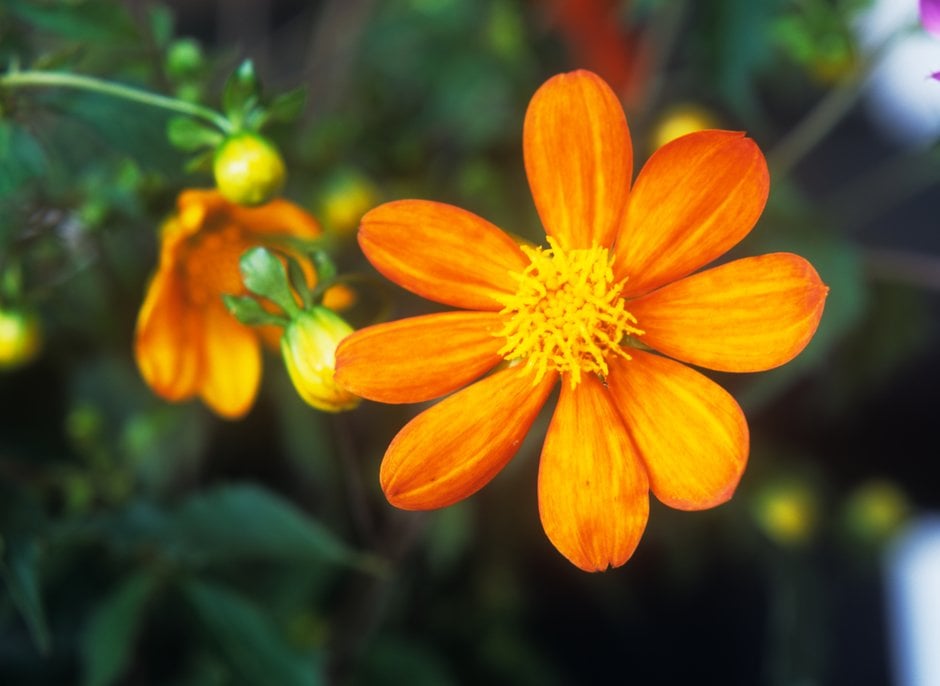Dahlia coccinea
scarlet dahlia
A variable tuberous perennial, usually 1.2-1.5m high but can reach to 3m high, with branched, brown-purple stems, toothed leaves up to 40cm long, dark green above and paler below. Single flowerheads, 8-10cm across, have golden centres surround by ray florets which are usually bright orange-scarlet but may be yellow, orange, dark maroon or many-coloured, from summer to autumn
Size
Ultimate height
1–1.5 metresTime to ultimate height
2–5 yearsUltimate spread
0.5–1 metresGrowing conditions
Moisture
Moist but well–drainedpH
Acid, Alkaline, NeutralColour & scent
| Stem | Flower | Foliage | Fruit | |
| Spring | Green | |||
|---|---|---|---|---|
| Summer | Brown Green Purple | Gold Orange Red | Green | |
| Autumn | Brown Green Purple | Gold Orange Red | Green | |
| Winter |
Position
- Full sun
Aspect
East–facing or South–facing or West–facing
Exposure
Sheltered Hardiness
H3Botanical details
- Family
- Asteraceae
- Native to GB / Ireland
- No
- Foliage
- Deciduous
- Habit
- Clump forming
- Genus
Dahlia are tuberous rooted perennials with pinnately divided leaves and showy flowerheads, double in many cultivars, in summer and autumn
- Name status
Correct
- Plant range
- Mexico to Guatemala
How to grow
Cultivation
Plant tubers 10-15cm deep in fertile, humus-rich, well-drained soil, in full sun; cut back to near ground level in mid-autumn, then in mild areas and on well-drained soils leave the tubers in the ground and protect with a deep organic mulch, while in colder areas or on heavy soils lift and store the tubers and replant in late spring after all danger of frost has passed; for more advice, see dahlia cultivation and our video How to plant dahlia tubers and care tips
Propagation
Propagate by basal softwood cuttings taken in spring from shoots from stored tubers, or divide the tubers, ensuring that each division has a viable bud
Suggested planting locations and garden types
- Patio and container plants
- City and courtyard gardens
- Cottage and informal garden
- Wildlife gardens
- Cut flowers
- Flower borders and beds
Pruning
Deadhead to prolong flowering
Pests
May be susceptible to aphids, capsid bug, earwigs, caterpillars, slugs, glasshouse red spider mite, and onion thrips
Diseases
May be susceptible to powdery mildews, dahlia mosaic virus, cucumber mosaic virus, tomato spotted wilt virus, storage rots, leafy gall, crown gall, dahlia smut, grey moulds, fungal leaf spot, Phytophthora, Sclerotinia, Verticillium wilts, and virus diseases
Get involved
The Royal Horticultural Society is the UK’s leading gardening charity. We aim to enrich everyone’s life through plants, and make the UK a greener and more beautiful place.
